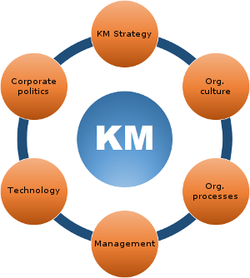
Inside an organization, valuable information is not being used. It is scattered in pieces across multiple repositories and siloed organization where no one even bothers to look for it. Valuable content also resides outside your organization: in social media, communities, etc., created by your customers and industry experts, which is used and shared by other customers when they need answers.
In many organizations, employees spend a significant amount of time trying to find and process information, often at a high cost. Recent report found that knowledge workers spend anywhere from 15% to 35% of their time searching for, assembling, and then (unfortunately) recreating information that already exists. And studies show that much of this time is spent not only looking for content, but also looking for experts. Most companies are unable to reuse the majority of work that is created every day.
This is the growing challenge of knowledge management today: how to leverage meaningful knowledge through constant reuse by each and every employee and each and every customer when they need it, no matter where it resides.
Return on Knowledge
These are few points to consider:
- Data on its own is meaningless. It must be organized into information before it can be used.
- Data is factual information: measurements, statistics or facts. In and of itself, data provides limited value.
- Information is data in context: organized, categorized or condensed.
- Knowledge is a human capability to process information to make decisions and take action.
Knowledge keeps organizations competitive and innovative, and is the most valuable intangible asset. Yet, knowledge is one of the most difficult assets to generate a return on (with repeated access, use and re-use), simply because information is so widespread, fractured, and changing at an accelerated pace.
Connecting the dots between relevant content and associated experts on that content is critical to leveraging the collective knowledge of an organization's ecosystem for the greatest return.
How to Get a Higher Return on Knowledge
The key to a higher return on knowledge is accessibility to information from anywhere, presented within any system, and personalized for the user's context.
The following tips would allow your organization to bring the return on investment in managing the knowledge throughout your organization.
1. Consolidate the knowledge ecosystem. Bring together information from enterprise systems and data sources, employees and customer social networks, social media such as Twitter, Chatter and more. Connect overwhelming amounts of enterprise and social information to get a complete picture of your customers, their interaction histories, products, levels of satisfaction, etc.
2. Connect people to knowledge in context. Connect users to the information they need (no matter where it resides) within their context.
3. Connect people to experts in context. Connect the people (the experts) associated with the contextually relevant content to assist in solving a case, answer a key challenge or provide additional insight to a particular situation.
4. Empower contribution. Allow users to create, rate content, and share knowledge about customers, cases, products, etc.
5. Personalize information access. Present employees and customers with information and people: connections that are relevant, no matter where they are, and no matter what they are working on. Just like the suggestive items on the e-commerce websites you visit, the experience is personalized, because it knows what you are working on.
Bringing this content to the fingertips of your employees and customers will increase organizational productivity, result in more innovative and customer-pleasing products, create happy employees, and drive customer satisfaction as well as profitability.
Unified Indexing
Unified indexing and insight technology is the way that forward-thinking companies will access knowledge in the 21st century. The technology brings content into context: assembling fragments of structured and unstructured information on demand and presenting them, in context, to users.
Designed for the enterprise, unified indexing and insight technology works in a similar way to Google on the Internet, but on the heterogeneous systems (e.g. email, databases, CRM, ERP, social media, etc.), locations (cloud and on-premise), and varied data formats of business today. The technology securely crawls those sources, unifies the information in a central index, normalizes the information and performs mash-ups on demand, within the user's context. The user creates the context based on his or her needs and interests.
Advantages of Unified Indexing:
- Customers will see a personalized and relevant view of information from the entire knowledge ecosystem (from inside or outside your company) intuitively presented so they can solve their own challenges.
- Service and support agents can solve cases faster. No longer support agents need to search across multiple systems or waste time trying to find the right answer or someone who knows the answer. They will have relevant information about the customer or case at hand, right at their fingertips: suggested solutions, recommended knowledgebase articles, similar cases, experts who can help, virtual communication timelines and more.
- Knowledge workers can stop reinventing the wheel. When every employee can access relevant information, locate experts across the enterprise, and know what does and does not exist, they can finally stop reinventing the wheel.
The new age of knowledge is here and it is powered by instantly accessible, collective, crowd-sourced and contextually relevant information that comes from everywhere and is presented as knowledge workers go about their work and customers look for information they need.
 RSS Feed
RSS Feed
